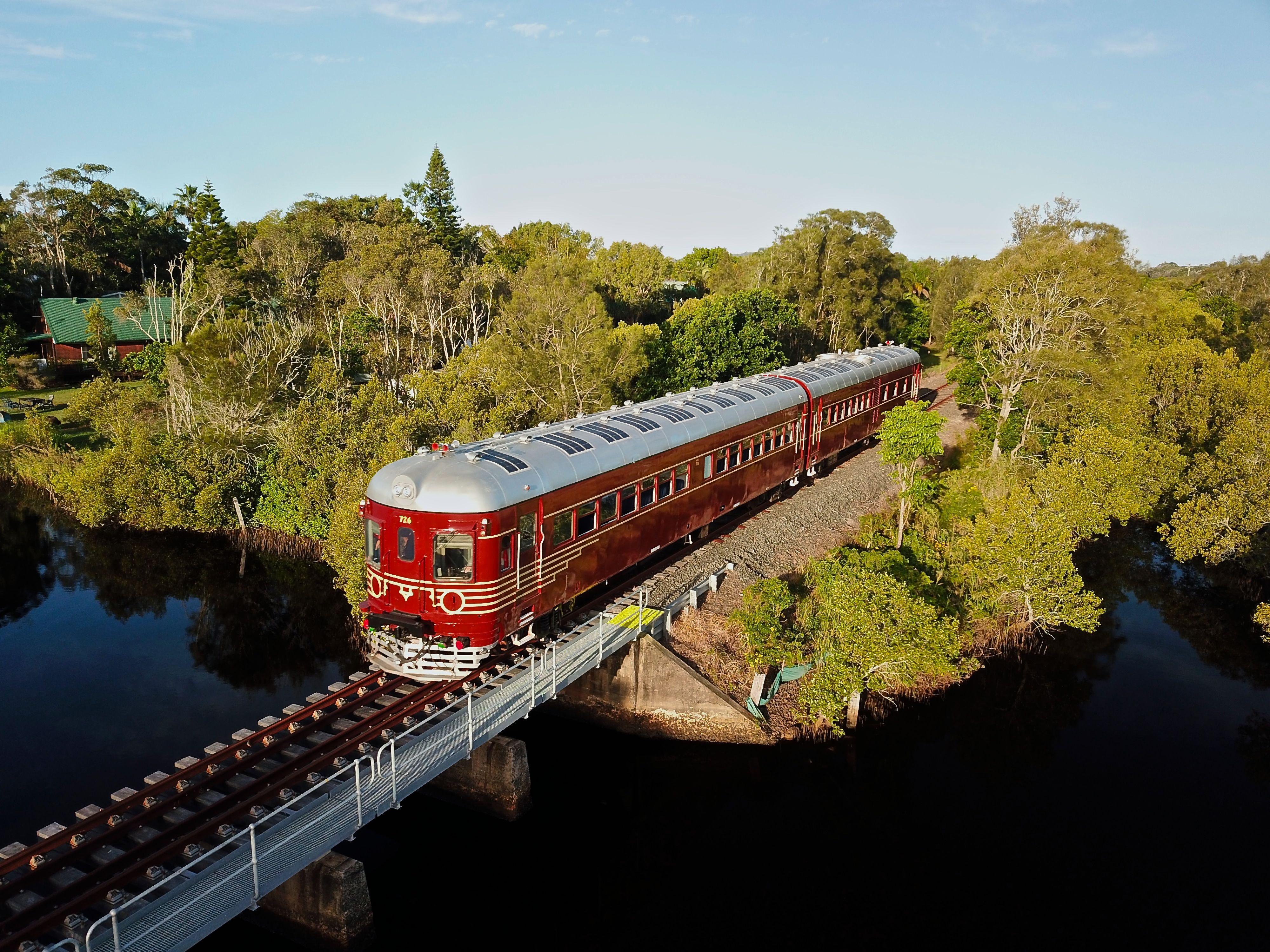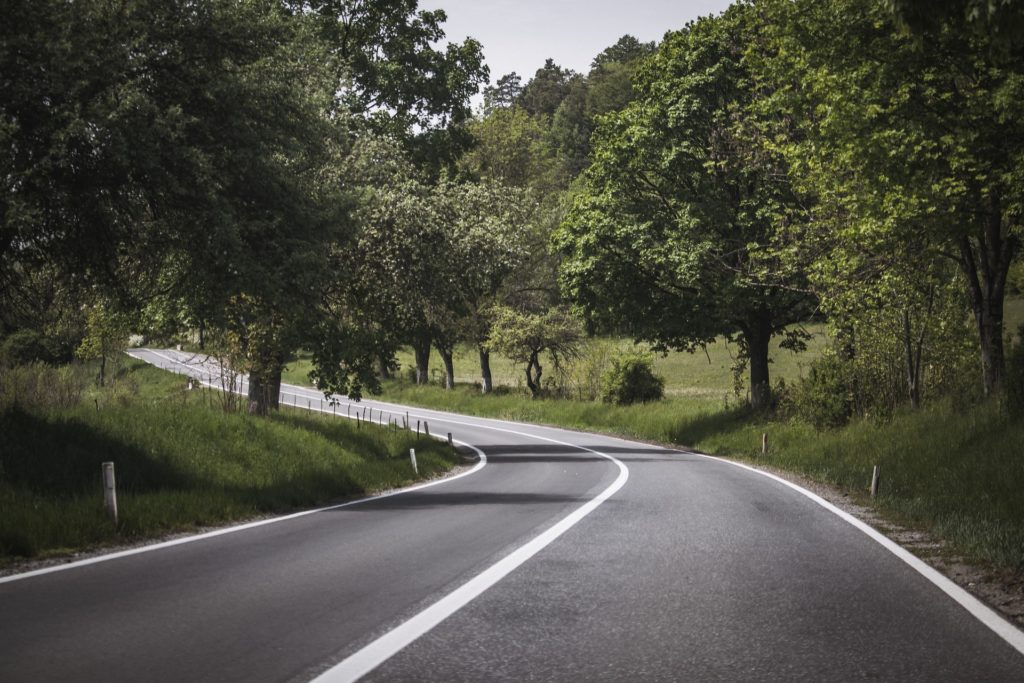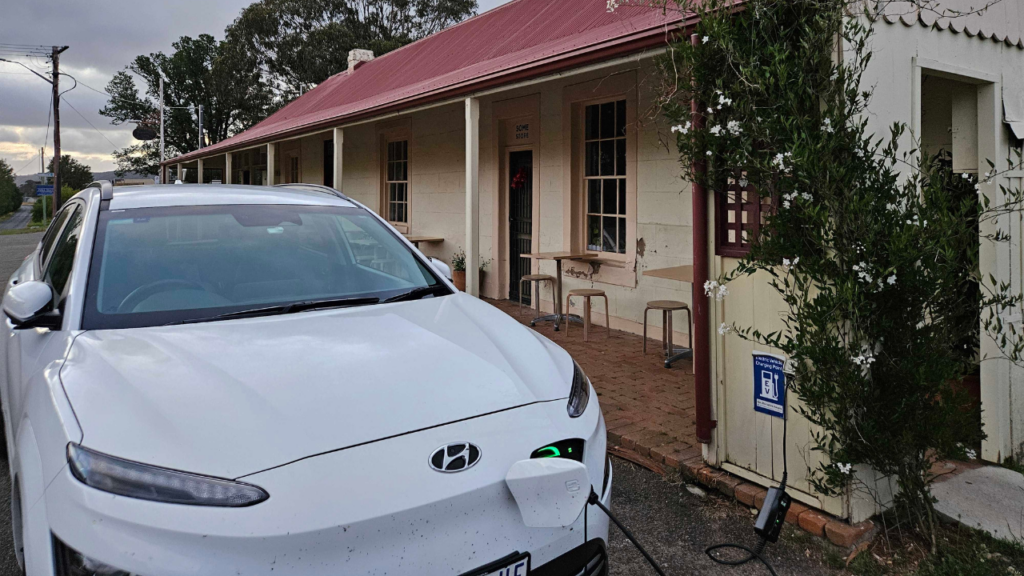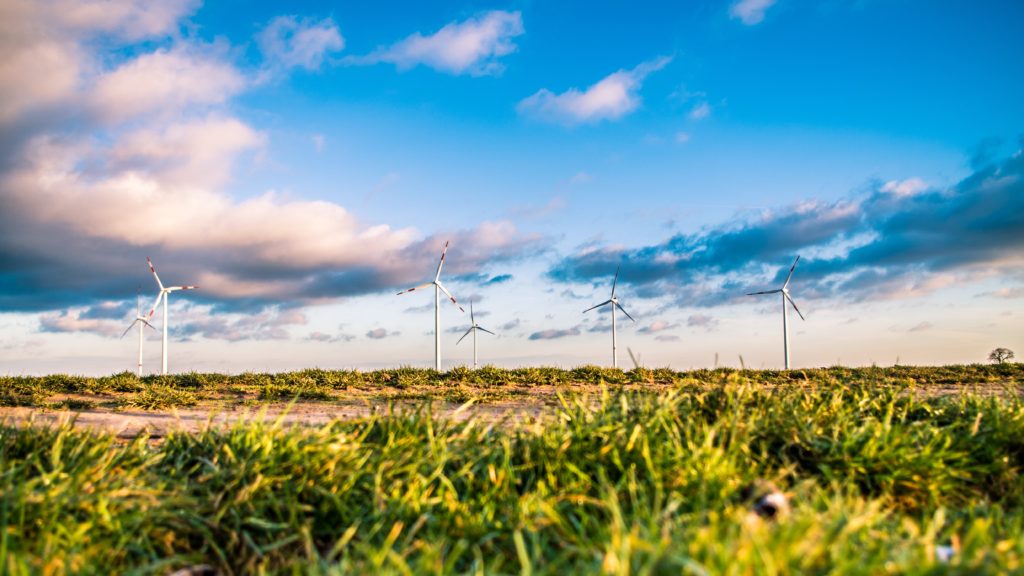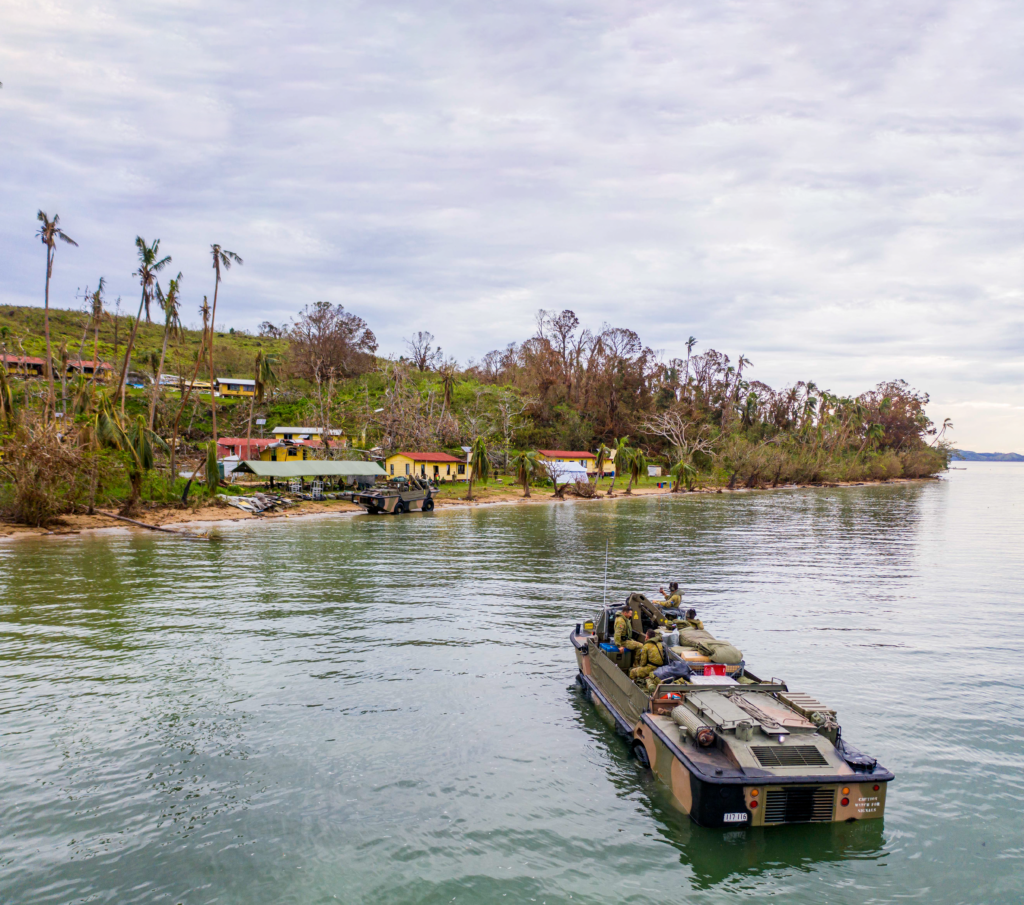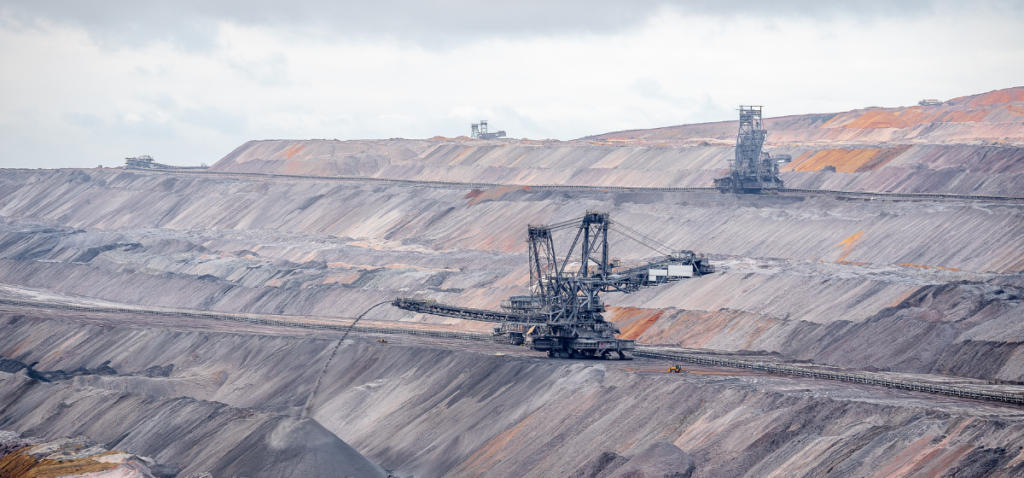“A coal baron launches a solar train.”
Sounds like it could be the start of a lame joke.
Instead, that’s only part of the incredible story behind the world’s first solar train, that has just celebrated its first birthday.
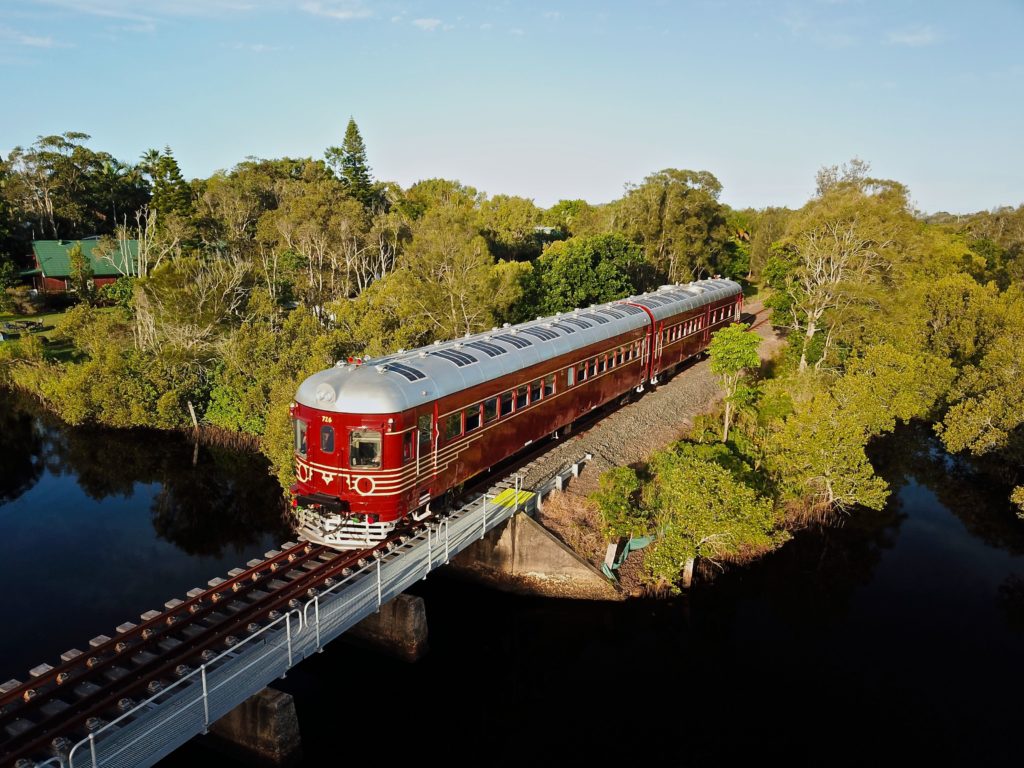
Innovative tech at work: flexible solar panels atop the train.
When the Net Carbon Dream Becomes a Reality
Operating out of Byron Bay, the train runs on one of the world’s oldest energy sources: the sun. In another world-first, the train uses flexible, curved solar panels that sit atop the roof, keeping with the heritage theme of the 1949 “red rattler” train carriages.
In addition to the 6.5kW of solar power capacity on its roof, the train’s storage shed also has solar panels which can generate up to 30kW to recharge the train’s batteries. This means the train can run almost exclusively off power collected straight from the sun.
This is net carbon positive travel with a Byron twist. The train service generates so much additional energy that it’s able to feed residual energy back to a local green energy supplier, to power nearby homes.
The Perfect Home
The train has now carried nearly 100,000 passengers in its first year and is being enthusiastically taken up by tourists and locals alike.
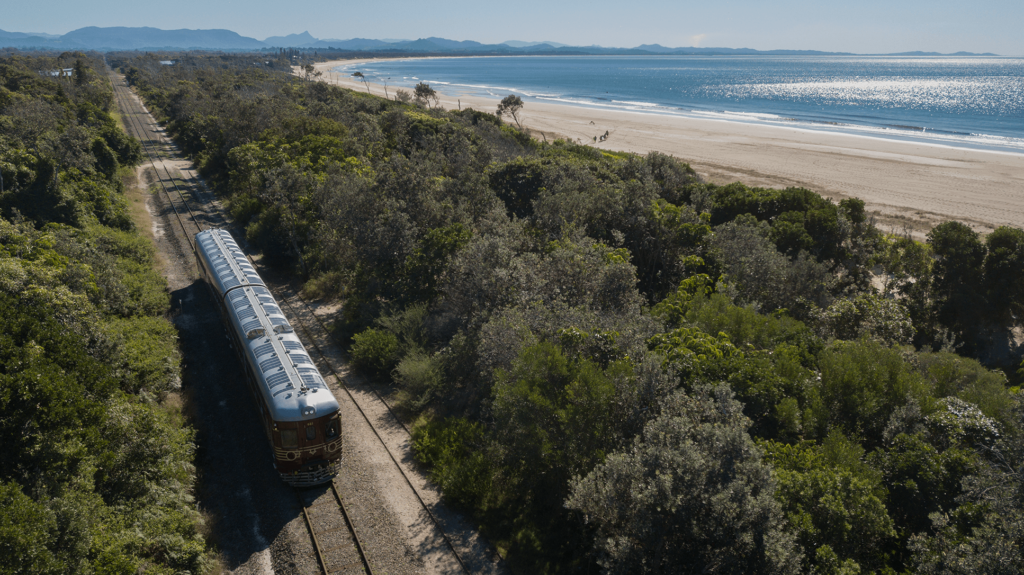
The iconic Byron Solar Train runs parallel to the beach.
The refurbished railroad connects a three-kilometre stretch between Byron Bay Town Centre and North Beach, providing a great solution to the oft gridlocked single lane access road into the heart of Byron.
While this location provides the perfect combination of features for the train to run – namely, it’s short and flat – that doesn’t mean it can’t be replicated elsewhere. Brian Flannery, the owner of the Byron Bay Railroad Company, who has made his fortune from coal, believes the technology could be adopted elsewhere, especially for inner-city trams with additional charging points.
The Sustainable Transport Revolution
Transport is now Australia’s second largest source of greenhouse gas pollution behind electricity – and our transport systems are failing when it comes to tackling climate change. However, the transport sector is also one of our biggest opportunities for reducing our greenhouse gas pollution. To do so, Australia needs to roll out a fleet of sustainable transport solutions.
As Nick Lake, the project’s solar engineer put it, “The Byron Bay project happened because of private funding. Imagine what we could do with the full support of state and federal governments to electrify our transport systems. We could be moving people carbon-free. We have abundant renewable energy resources and there is now no technology barrier.”
Innovative solutions, like the Solar Train in Byron, capture our imagination by demonstrating the unlimited potential for solar. The Solar Train showcases just one of the ways that we can completely transform our transport system and help tackle climate change at the same time.
To find out more about innovative transport solutions, read our recent report, “Waiting for the Green Light: Transport Solutions to Climate Change.”

